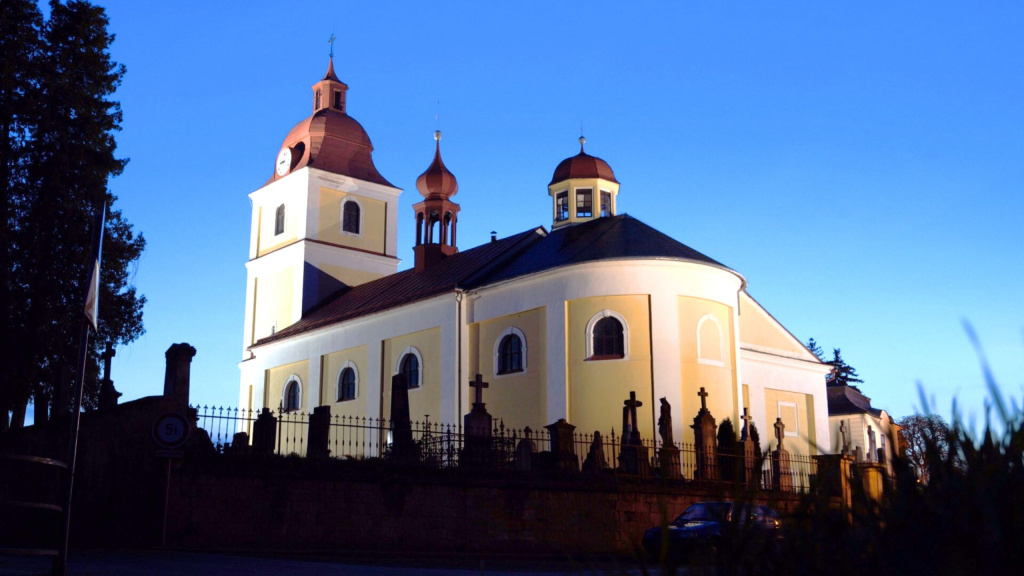

Spa Belohrad
Church of All Saints
To my next neighbours…
Piano Recital
The concert is held under the auspices of Alena Kuželová, DiS, Mayor of the town Lázně Bělohrad.
Admission
Performers 200 CZK
Matyas Novak – piano

Program
In negotiations

Program
In negotiations
Matyáš Novák is one of the most promising pianists of his generation thanks to his extraordinary harmonic sensitivity, wide repertoire and excellent technique. At the age of ten he made his first appearance with an orchestra, at nineteen he made his Carnegie Hall debut and at twenty he presented a solo recital at the Prague Spring Festival. His talent is evidenced not only by the many prizes he has won at domestic and international competitions, but also by the fact that at his young age he has dozens of concerts with orchestra and hundreds of compositions for solo piano in his repertoire.
He started playing the piano at the age of five. He graduated from the J. K. Tyl Grammar School in Hradec Králové and the Pardubice Conservatory in the class of Prof. Jitka Fowler Fraňková. He also studied at the prestigious Incontri col Maestro Academy in Imola, Italy, with Prof. Boris Petrushansky. He is now continuing his studies at the Academy of Performing Arts in the class of Prof. Ivan Klánský.
He has won many international competitions. He has won the Concertino Praga (2015), the Evangelia Tjiarri Competition in Cyprus (2015), the Conservatoire Competition (2016), the Jenö Takács Klavierwettbewerb (2016) and the Bradshaw & Buono International Piano Competition (2017). In 2018, he won the 2nd Prize and the Steinway Prize at the Edvard Grieg International Competition in Bergen and in 2022 he was a semi-finalist at the Franz Liszt International Competition in Utrecht.
Matyáš performs at home and abroad. He has played in many countries in Europe, Thailand and the USA. In 2015 and 2016 he completed two successful tours in China. In 2017, he made his Carnegie Hall debut and released a CD of Liszt’s cycle Years of Wandering: Year One: Switzerland. In 2021, he recorded the Mozart concertos with the Wihan Quartet for Nimbus Alliance.
As a soloist he has performed with the Brno Philharmonic, the Janáček Philharmonic Ostrava, the Prague Chamber Orchestra, the Chamber Philharmonic Pardubice, the Bergen Philharmonic and the RTVE Orchestra. He regularly participates in masterclasses and performs at festivals such as Prague Spring and Smetana Litomyšl. He is a member of the PETROF Art Family, a sought-after chamber musician and accompanist, and, like Antonín Dvořák, a great connoisseur and lover of railway transport.
Spa Belohrad
The town of Lázně Bělohrad is situated in the picturesque foothills of the Giant Mountains and has approximately 3,800 inhabitants. It consists of several parts – Lázně Bělohrad, Horní Nová Ves, Dolní Nová Ves, Uhlíře and Dolní Javoří. The town is mainly known for its spa specialising in the treatment of musculoskeletal, gynaecological, neurological, oncological and skin diseases. The first mention of a settlement on this site dates back to 1354. The name ‘Bělohrad’ appeared for the first time in the second half of the 16th century and has been the name of the estate ever since. In 1722, when the settlement was owned by Bertold William of Wallenstein, it was upgraded to a town.
The city’s landmark is the modern town hall, which was built between 2020 and 2022 according to a design by re:architects. Its distinctive design and subtly openwork white façade make its appearance change according to the light conditions. The large windows give the building a sense of lightness and airiness. The interior is decorated in light shades, which visually enlarges and illuminates the spaces.
The historical monument of the town is the Church of All Saints, which was built in 1689-1700 on the initiative of Bertold William of Wallenstein. The Baroque pulpit and the parapet of the oratory have been preserved. The main altar is decorated with a painting of All Saints from 1889 by the academic painter Antonín Mühl. Above the south side entrance there is a smaller painting of the Madonna by local native Václav Březina.
Another architecturally valuable building is the Empire-style orangery built in 1831 by Antonie Stillfried. It was originally used for growing exotic plants, but in 1959 it was converted into the K. V. Raise and for several decades it functioned as a museum.
The town is also dominated by the castle, whose original Renaissance fortress was given a Baroque appearance in 1721 thanks to Bertold Wilhelm von Wallenstein. In the central part of the southern facade is the Chapel of St. John the Baptist with a sandstone statue of an eagle. South of the chateau, the outbuildings forming the court of honour were built. In the 19th century, the castle was modernised, during which the mansard roof was removed and the façade was changed.
The cultural heritage of the town is represented by the Frič Museum, which was founded thanks to the naturalist Antonín Frič. The architectural design was developed by Otto Tille. Funding was provided through public collections, lotteries and cultural events. The museum was inaugurated on 12 September 1904 and later expanded by two wings, giving it its present form.

